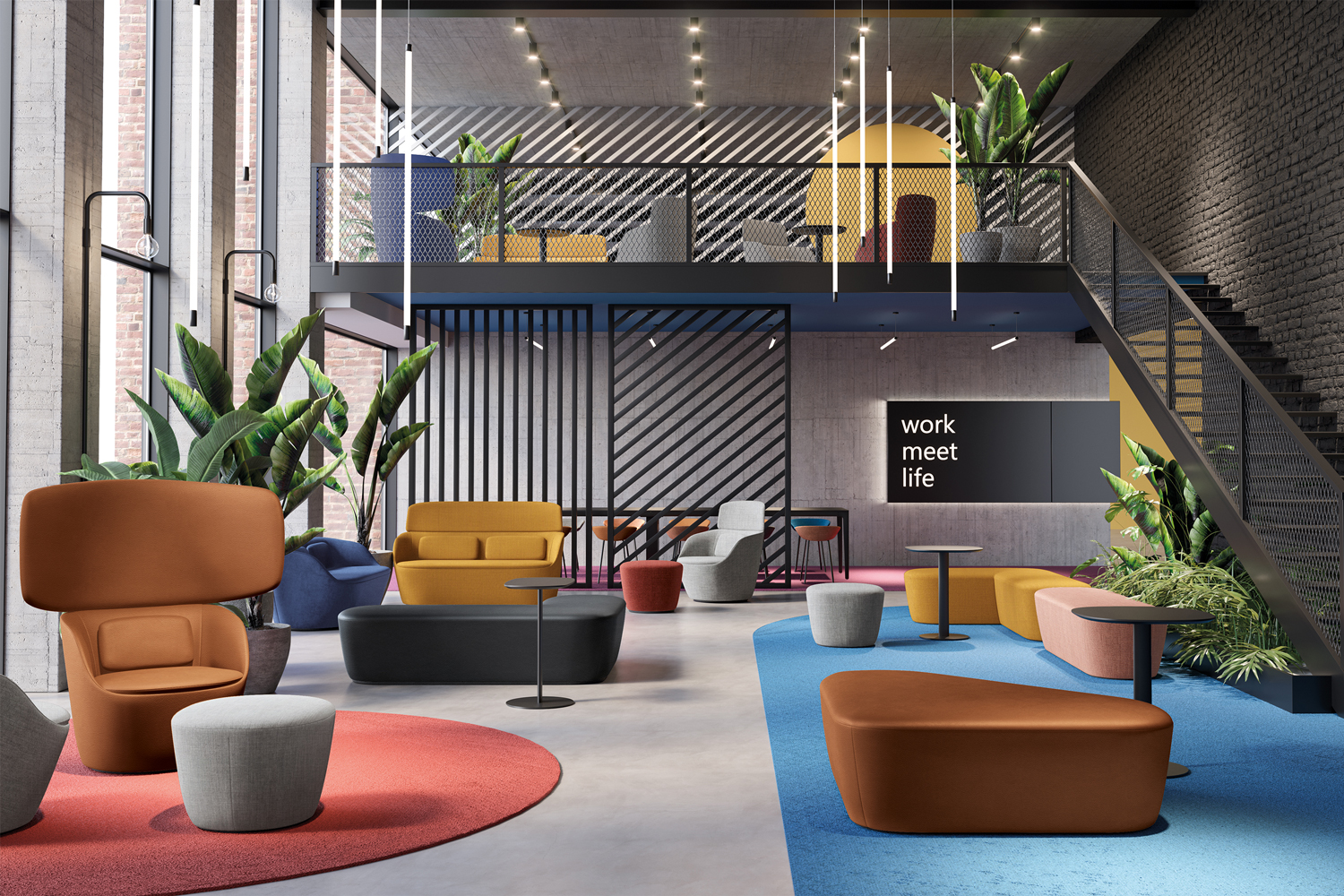Everyone is different and perceives the environment in various ways. How we approach work, relationships and other activities is also based on this perception.
Sight, touch, hearing, smell and taste: each element is linked to one another, triggering different reactions in each individual. Today, more and more architects and designers are taking the five senses into account when developing new ideas and are questioning the utility of sensory perception in their choices. How is it possible to design an environment that is pleasant for more than one person?
There are no perfect rules, but there are some multisensory design guidelines that can be implemented in office design. These tips are useful for transforming aseptic offices into lively places that combine professional efficiency with greater well-being for all.
Exposure to light or shade, the possibility to touch water from a fountain, the presence of certain scented plants and the sounds produced by various elements in the environment are important qualities, as are visual ones. What does the texture of a certain material feel like? What sound or feeling does a material produce when you step on it? More and more often architects and planners are developing a sensory analysis of the environment they are designing.
Sight
Light has an important impact on people’s experience of space. In the working environment, visual stimuli should be able to make activities more pleasant by increasing productivity. Brighter lighting can increase the level of interaction and innovation, while warmer and softer lighting lends itself to individual work that requires concentration.
Natural light, the elimination of visual blocks and colour play a central role. The extra touch? Provide desk lamps with dimmers that allow partial control of the workstation light.
Touch
An investment in heating/air conditioning to equalise the temperature in all rooms can bring many benefits as temperature is often a source of discomfort for many employees.
Touch also includes materials. A product made of high quality material makes work more comfortable and helps to be more productive. Pleasant materials and furniture contribute to a more relaxed and comfortable experience, while giving the office more personality.
Ergonomics is another important aspect of workspace design. If furniture is not ergonomic, employees will quickly feel it in their back, neck and shoulders.
Hearing
Acoustic pollution is a serious problem, especially in open-plan environments. From a design point of view, it can be limited through the use of sound-absorbing materials, the creation of spaces dedicated to work that requires concentration, such as huddle rooms, and the inclusion of pods in common areas.
Smell
Biophilic design is often only associated with the inclusion of certain plants in the office, but it also extends to natural light. The introduction of plants can increase oxygen levels and air quality, which helps with concentration and creativity and can also improve the appearance of the office.
Smell is one of the strongest senses as it relates to the emotion/memory related functions of the brain. Some smells can have an impact on attention and thus affect productivity. Strong food odours in the workplace, on the contrary, can be distracting and irritating for colleagues.
Taste
How can we talk about ‘taste’ in the design context? Although taste is not directly affected by the workspace, the food and drink people consume during the day has a significant impact on productivity and, in the long term, on physical and mental well-being.
Those who follow the guidelines of multi-sensory design must pay more attention to the refreshment areas, from the canteen to the work café, to the vending machine corner: high food and drink quality translates into greater employee comfort.
The constant search for wellbeing has given space to new ways of experiencing time in the office, whether through objects, innovative materials or everyday spaces inspired by design that involves all the senses and sets the basis for new trends.
All these elements are involved in creating a specific atmosphere that cannot be reduced to the simple visual qualities of a space. The analysis of the sensory components allows us to take into account the whole rich variety of qualities of an environment, with the aim of improving it.
Being ‘immersed’ in multi-sensory design furniture increases the perception of well-being and the feeling of spending quality time. Being in the office thus becomes a unique experience, which allows people to live convivial and private spaces to the full.

